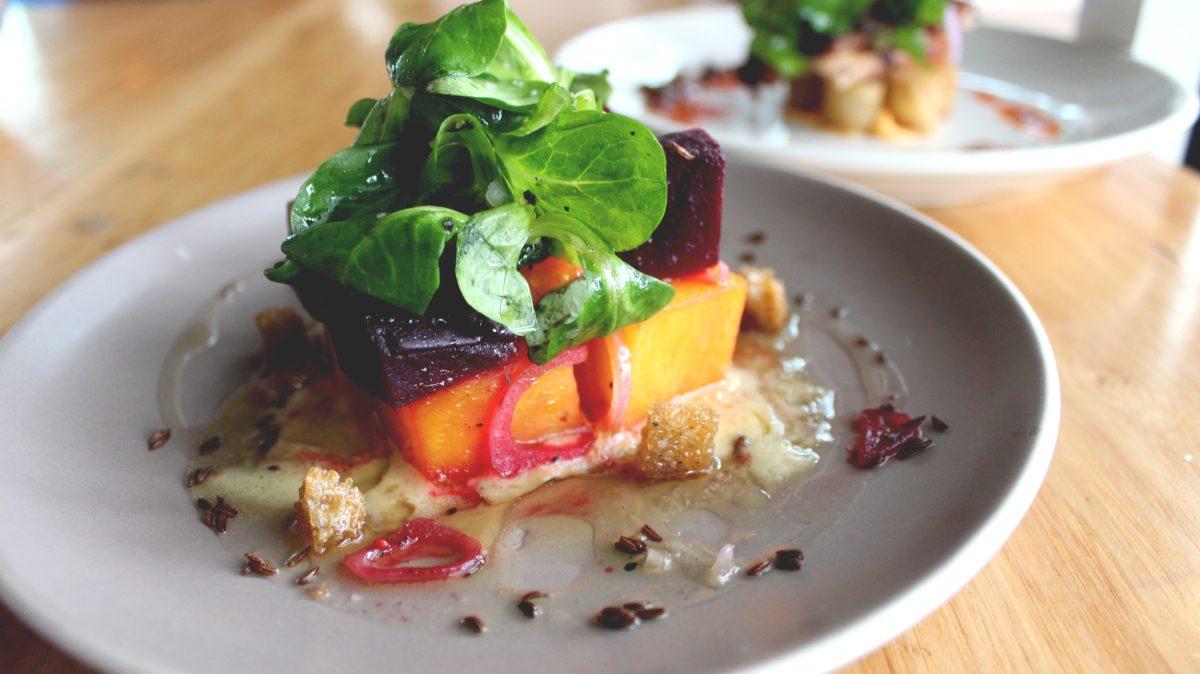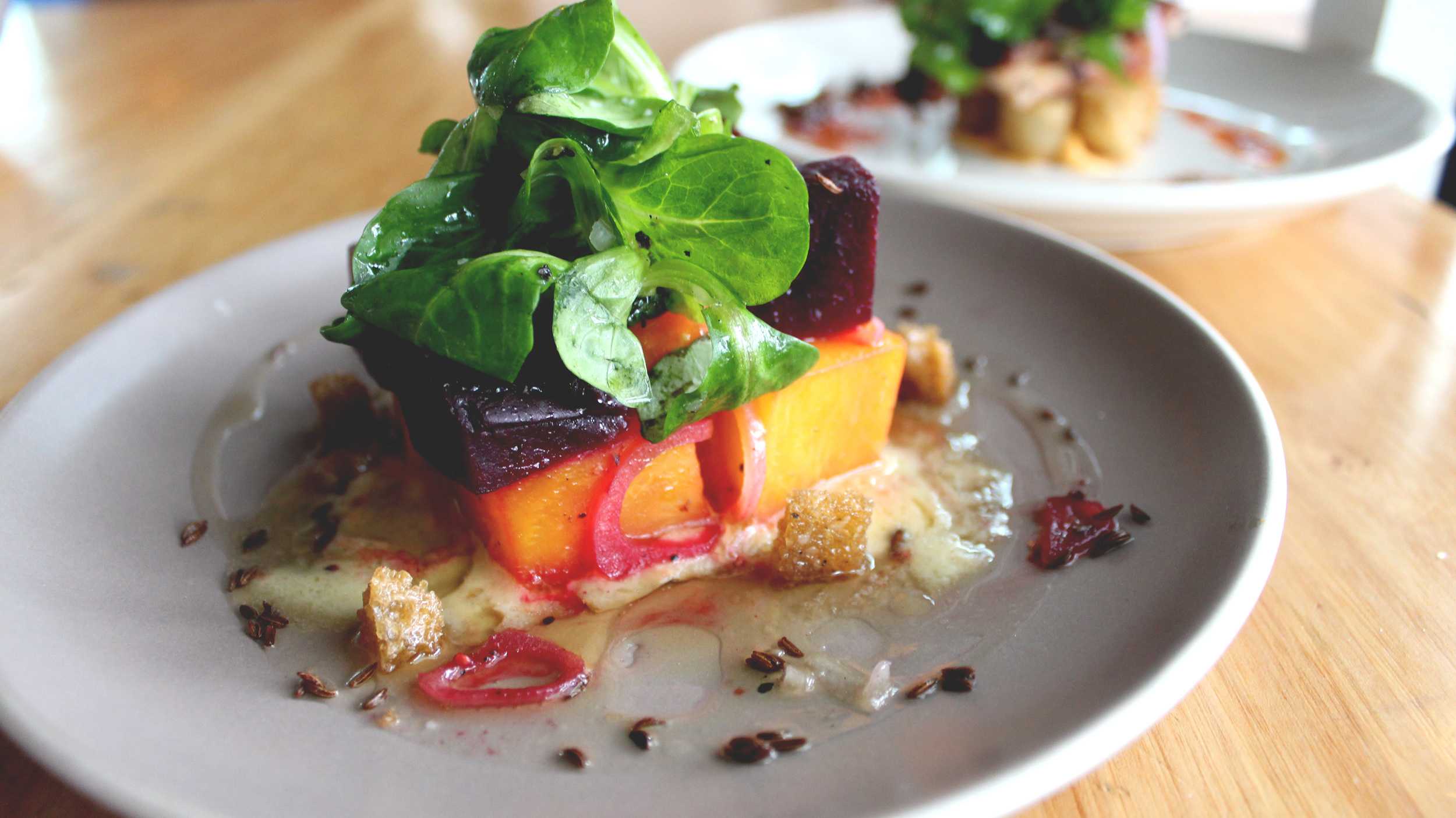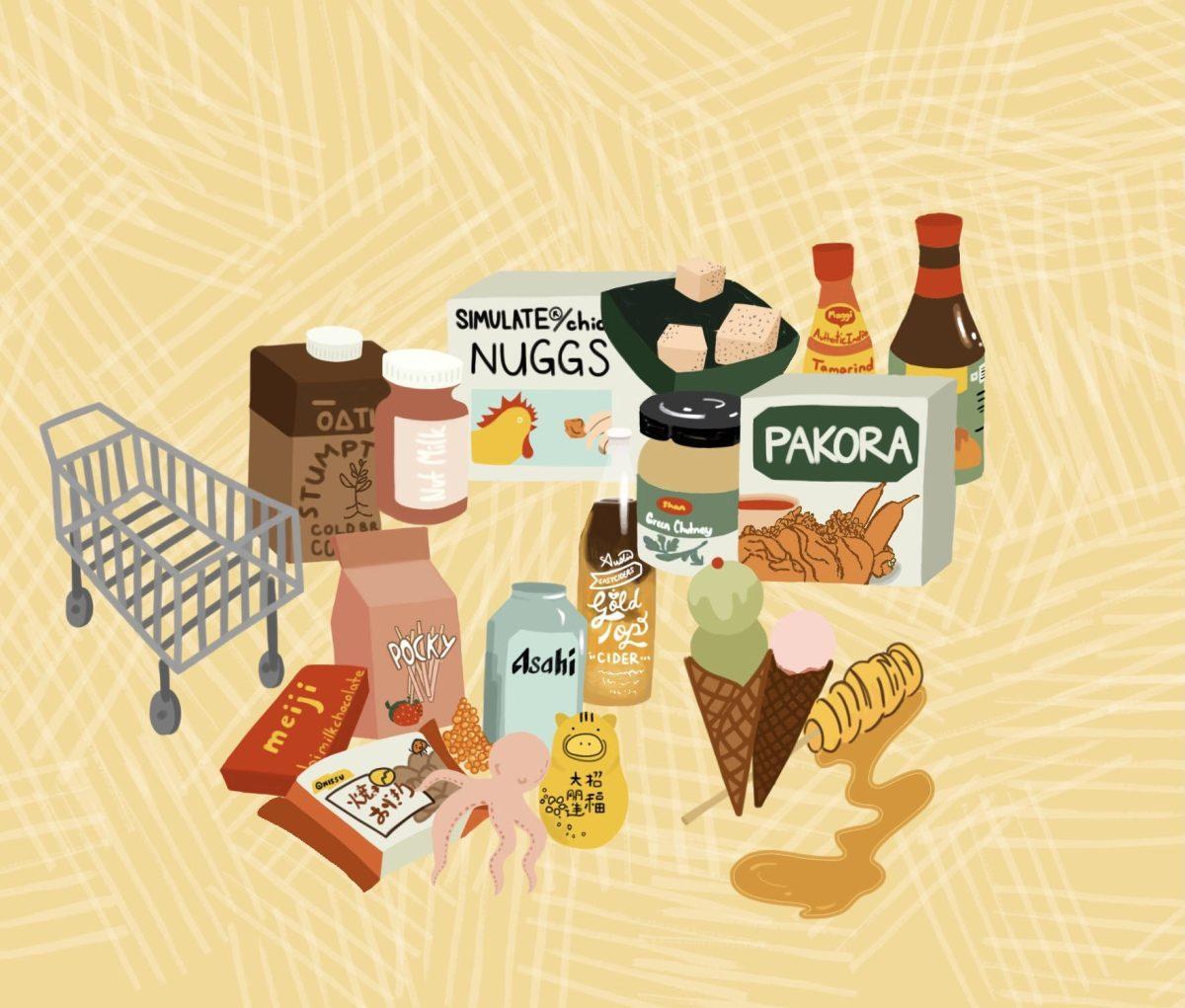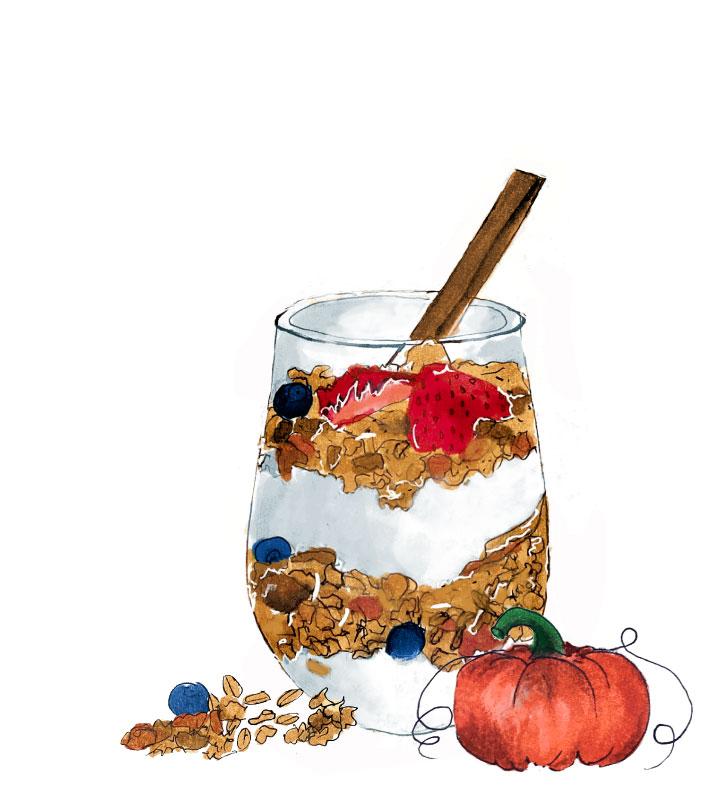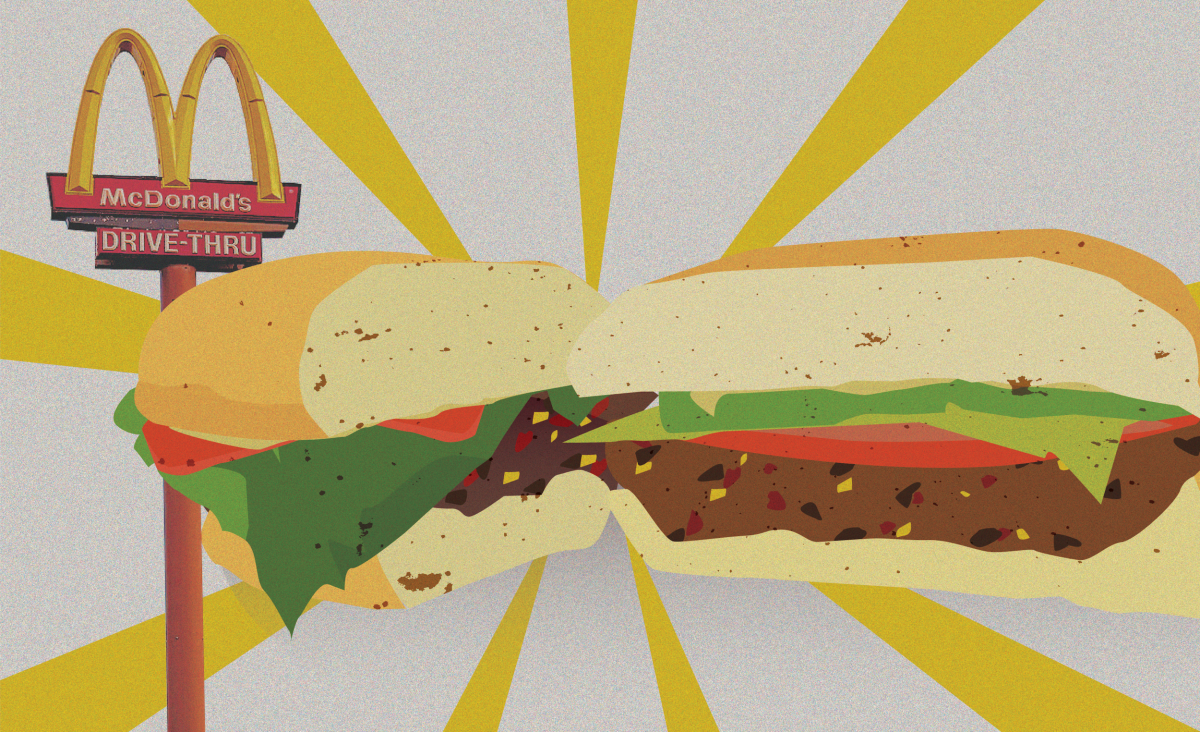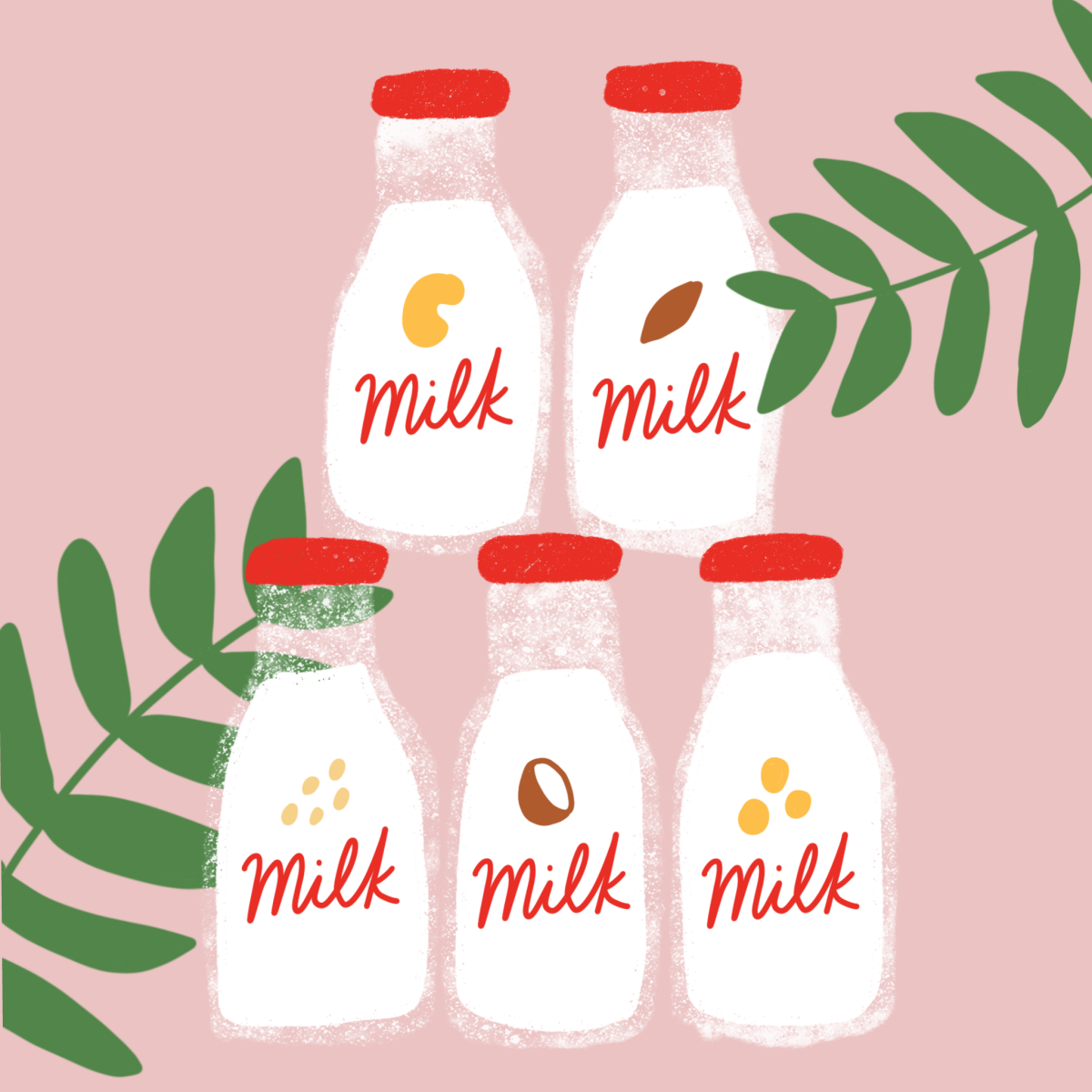Culinary creativity goes beyond just the ingredients in a dish. There is another essential element required to impress the critics. In gastronomic language, the process is referred to as “plating,” and in the culinary realm, plating is sometimes considered a form of high art.
Story by Devon Grussmark
Photos by Thalia Juarez
Editor’s Note: This is the first installment in the ORANGE Food & Drink series “Chef to Chef,” which features culinary technique tips and tricks for home cooks by professional chefs in the Austin area.
Why do chefs and food critics place so much emphasis and importance on the presentation of food? The answer is obvious— we eat with our eyes. If a dish does not look appealing, we will not want to eat it, no matter how delicious it might be. Plating involves various aspects, such as color, temperature, texture, height and every other visible feature of a dish that we see before digging in. Chef Kenneth Lue from Austin’s South Congress Cape Cod-style seafood restaurant, Perla’s, understands the importance and necessity for the art of plating, which he learned through his lifetime of experience with food.
Lue admits to having loved food from before he was tall enough to see over the stove. As he got older, his passion grew when he started out cooking basic meals, like pasta and chicken, for his family whenever he could. It was these simple home-style dishes which led him to study at The Culinary Institute of America. Through this career, Lue says that he did not get as much professional training in the art of plating as he would have liked, but he admits that this is probably because of its creative and artistic nature.
Lue says plating is an art and the plate is your canvas. He places heavy importance on the creative aspect of it, since presentation is the first impression. “People see the food, smell the food, touch the food, then taste the food,” Lue says.
Earlier this week, Chef Lue sat down with ORANGE writer Devon Grussmark to share his best plating tips:
1. Everything on each plate should be consistent. If you are serving five people the same dish, they should all be able to see the same things on their plate as the other plates around the table.
2. All plating elements should be edible. Adding garnishes can be a bit unnecessary and wasteful. “There is no point in putting leaves on the plate that will just be taken off right away, unless of course it’s a part of the actual food, like a shrimp shell,” Lue says.
3. Keep in mind that adding different textures to your plate keeps it interesting. “If you have parsnip puree, roasted parsnips and parsnip chips, they should go on your plate in that order,” Kenneth says. He adds that the consumer should be able to see each texture.
4. Add some height and 3D aspects to your dish to be original and intriguing.
5. Leave a clean border around the rim of the plate. If you do not leave room for at least a finger to touch the edge, the server will have to awkwardly put it down with their hand underneath the plate.
6. Finally, Lue says that it is always best to keep it clean and simple in order to highlight the beauty of the food. “You can make anything look pretty, so just have fun with it,” he says.
Chef Lue also provides helpful advice on things to should avoid when preparing your dish:
1. There is really no need to place things sticking out of the top of your dish or to sprinkle unnecessary garnishes around the plate. Doing either one of these might come across as a little outdated, he says.
2. Lue warns against making your presentation too abstract or too difficult to replicate. “The cleaner your plate looks and the less time it takes to plate, the more fun you can have while doing it,” he says.
The art of plating is open-ended, and as with any creative endeavor, inspiration is necessary. So, take your time to see how chefs like Lue do it, and learn from them. After all, they are professionals. Work the plate, have fun and dig in.































